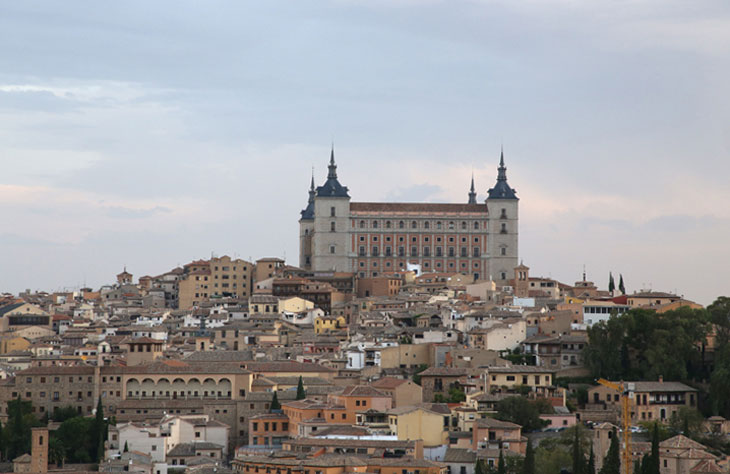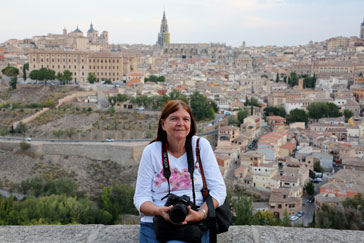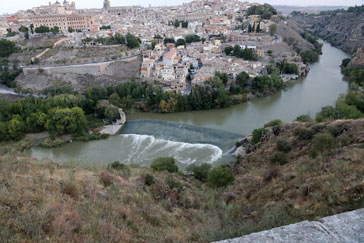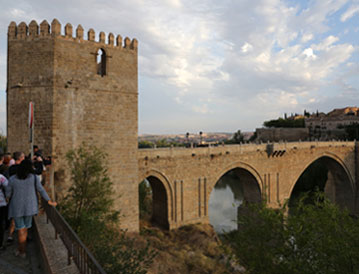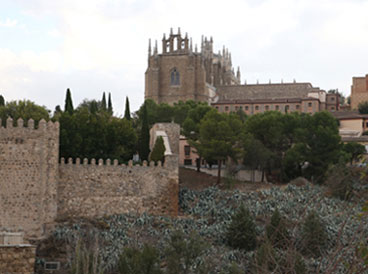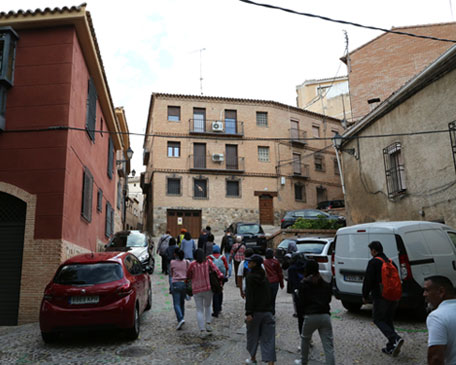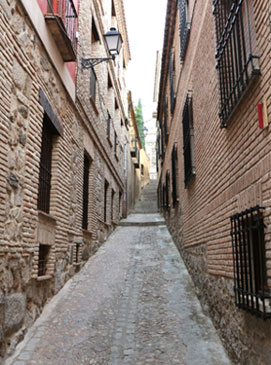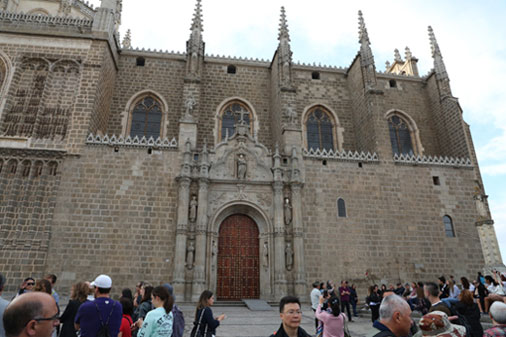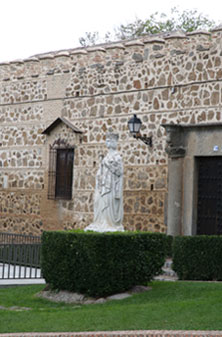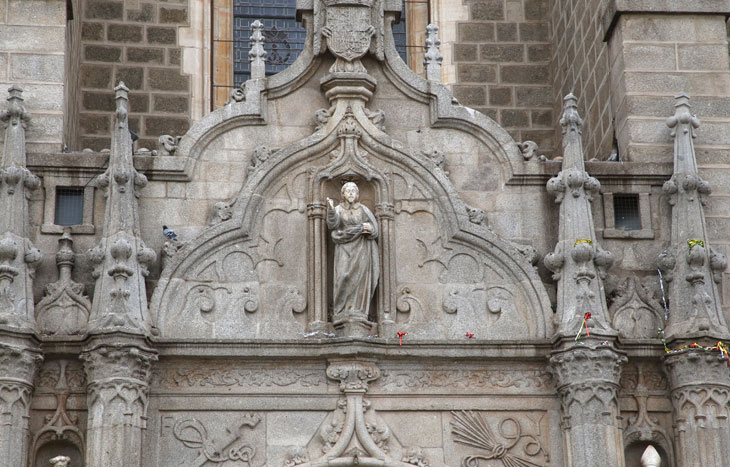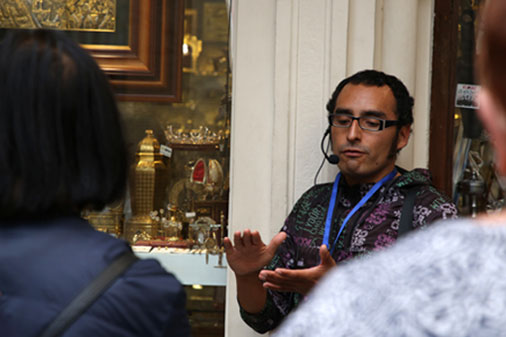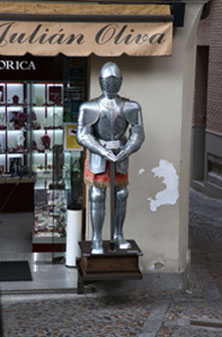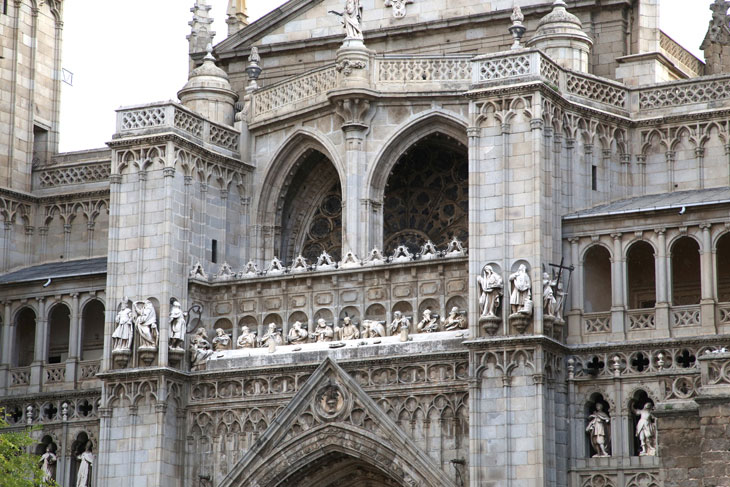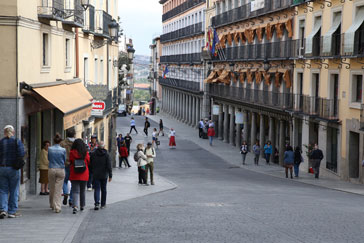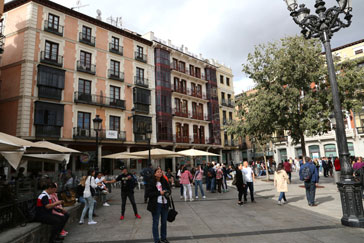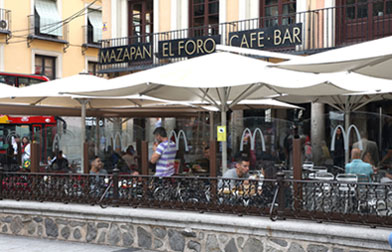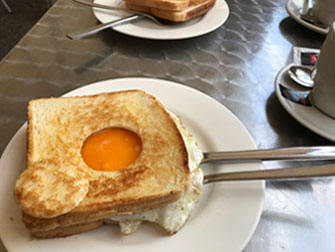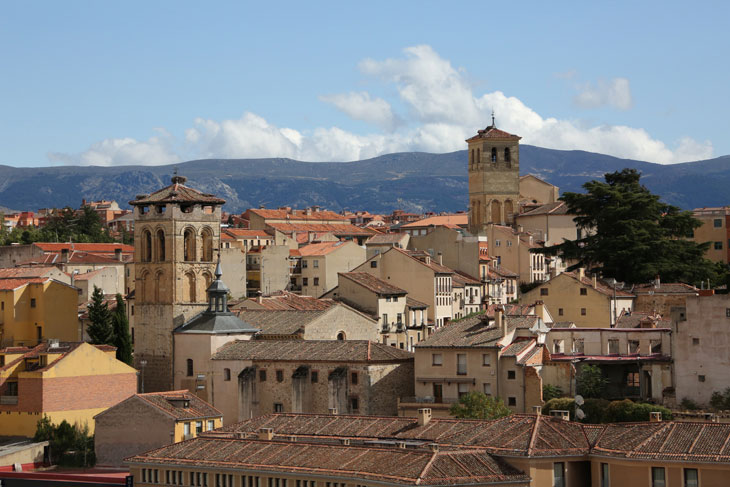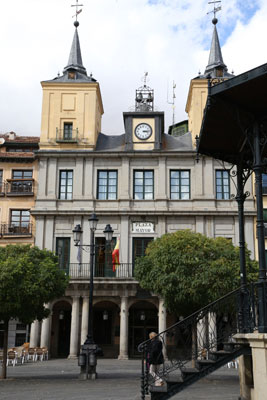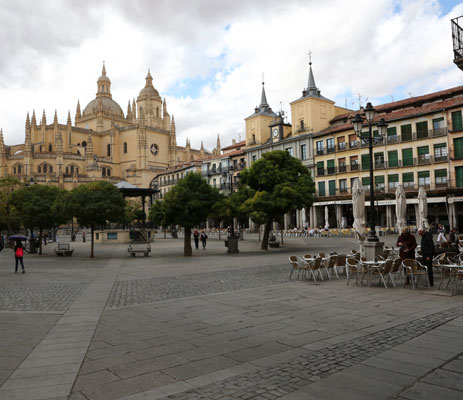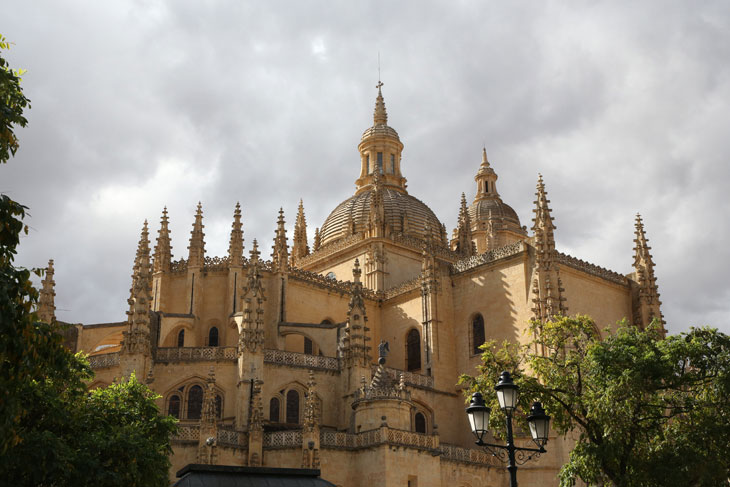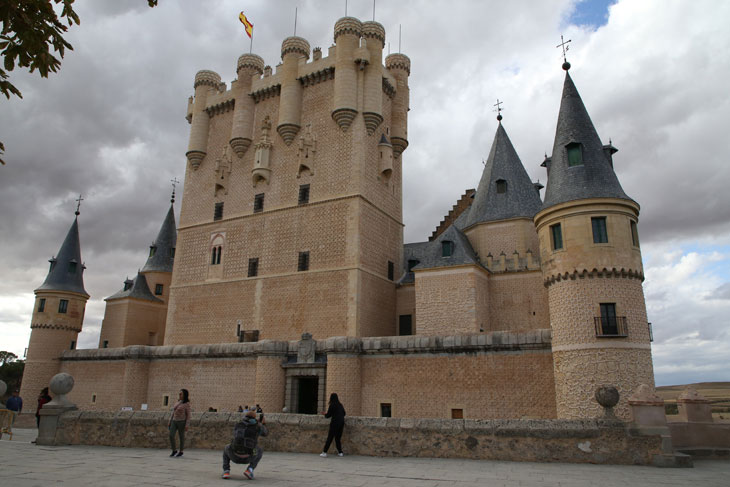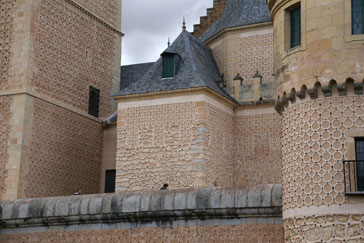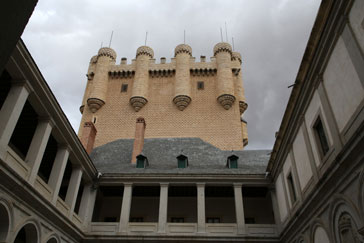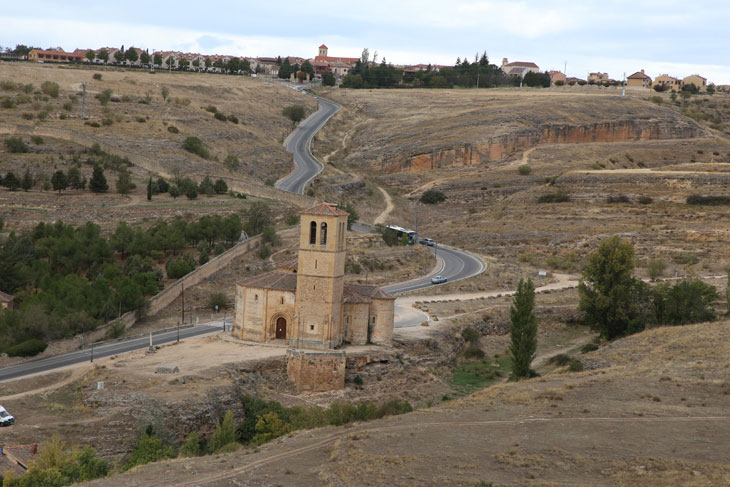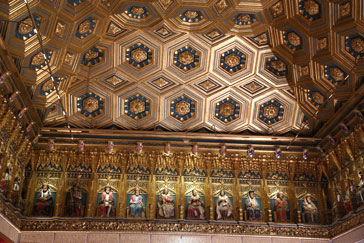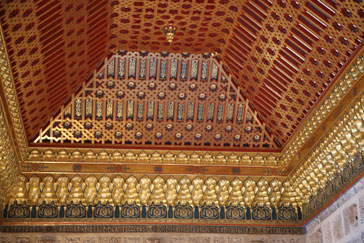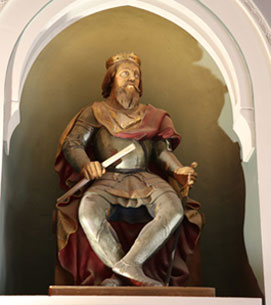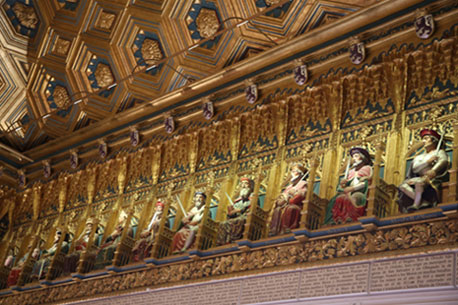Childhood Dreams
Day Tour to Toledo and Segovia
Unlike our relaxed small group tour to the medieval villages outside Barcelona, the tour we took to Toledo and Segovia
began as a pre-dawn chaotic mob scene. There were two gigantic buses full of tourists and a smaller bus packed with those
who couldn't be fitted into the larger buses. The tour was conducted in Spanish on one large bus and English on the other,
but it was initially unclear which bus was which.
We finally managed to board the correct bus, fought off the urge to sink into an unhappy mood, and settled in for a nap
as the bus sped along the highway. When we awoke about an hour later to the idyllic scene pictured below, our mood improved
considerably.
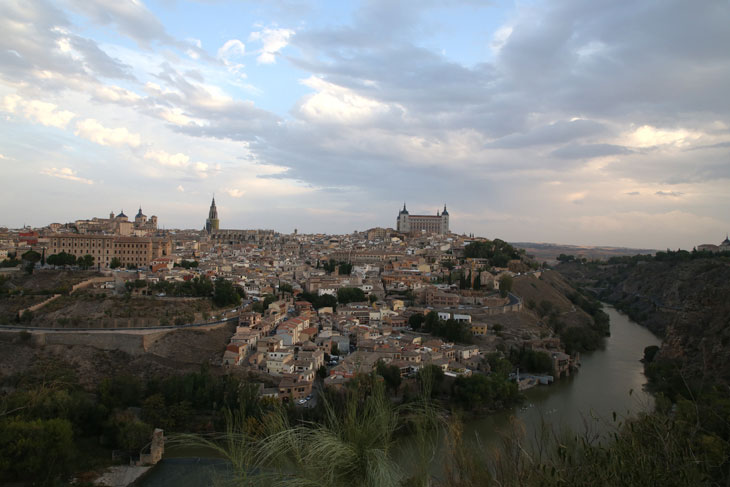
The building at the top of the hill is the Alcázar - an old stone fortification that was once used as a Roman palace.
Today it serves as a military museum.
Many towns in Spain have an alcázar. The word is sometimes translated as castle or palace and at other times as fortress.
Some were built by the Romans, and others were built in later years by the Moors or the Christians.
After enjoying the view and taking many pictures, we continued on to the Puente de Alcántara - a bridge built by the
Romans and used by pilgrims to cross the Tagus River in the Middle Ages.
We strolled across the bridge, and the group quickly proceeded up the steep narrow streets of the town. We soon fell behind
the crowd with several other stragglers.
We caught up with them at the Monastery of San Juan de los Reyes founded by Ferdinand and Isabella to commemorate the birth of
their son, Prince John.
Toledo is known for its expertise in sword making. This is one of our guides in front of a shop that sells swords and knives.
We continued on to the impressive-looking Toledo Cathedral.
Then we were released in the town plaza to exlore the town on our own for about 90 minutes. We hadn't had any breakfast so we
opted to spend some of the time dining at an outdoor cafe. Unfortunately, the service was so slow, it took almost all the allotted
time. Walt did eventually get a very impressive looking ham, cheese and egg sandwich, though.
We expected that we would have to dash through the streets of the town again trying to keep up with our speedy group, but after
everyone had reassembled, our guides led us to a long series of escalators which took us down to the parking area where our buses
were waiting.
One final view of Toledo from near the plaza.
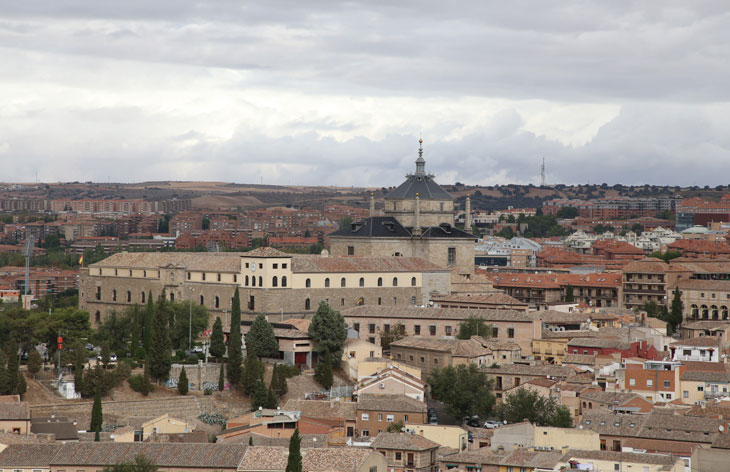
Toledo lies to the south of Madrid, and Segovia is to the north so it took about 2 hours to get there. Time for another
nap.
We had been drawn to this tour mainly because we were anxious to see the aqueduct in Segovia, and it did not disappoint.
It isn't known exactly when the aqueduct was built, but it was probably during the first century AD. It once transported
water to the city from the Rio Frio, 11 miles away. At it's highest point, it is over 93 feet tall, and it has 167 arches
in all. It is one of the best-preserved elevated Roman aqueducts in the world.
The bus pulled up to the parking lot that stretches before it, and we stood transfixed for quite awhile admiring the
sight.
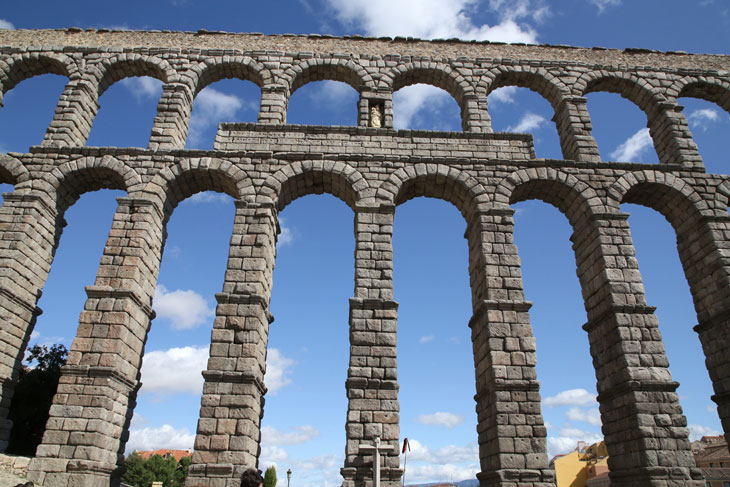
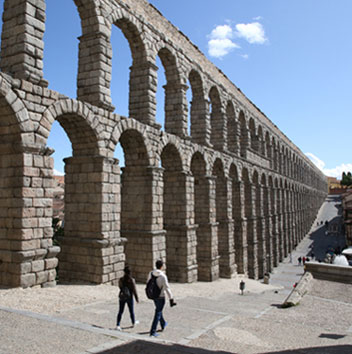
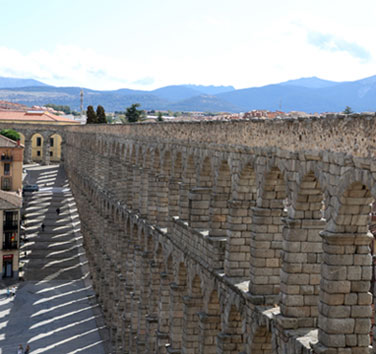
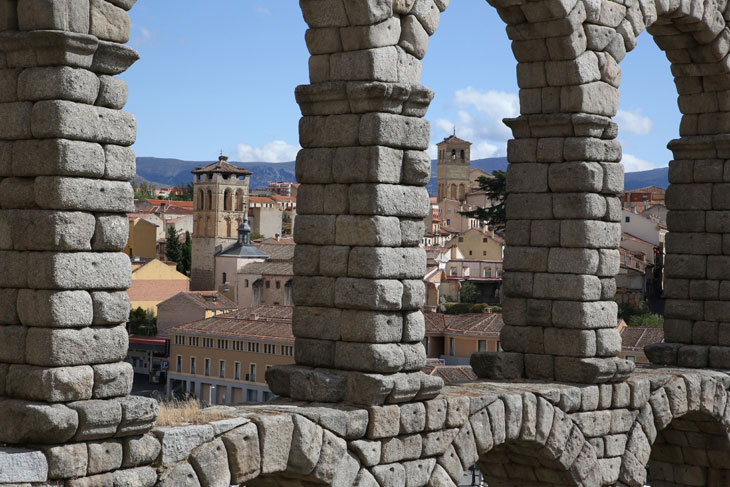
We were given the option of exploring on our own, staying with the tour group, or dining on the local specialty - suckling
pig. We opted to explore on our own because the group moved too quickly for our taste and it was difficult to hear what the
guide was saying. Although the pig sounded delicious, we knew that would be a very large meal, and that eating it would probably
take the rest of the afternoon. We would all meet up later at the Alcázar where we would be given tickets to enter the
ancient fortress.
We climbed the steps next to the aqueduct and were rewarded with a wonderful view of the city.
As we wondered through the streets to our destination, I was stunned by the beauty of the Segovia Cathedral which is located
in the town's Plaza Mayor. The building dates back to the mid 16th Century.
Emerging from the narrow streets of the town into the vast expanse of the courtyard in front of the Alcázar felt
exhilarating. A strong breeze was blowing, and dark clouds were gathering in the sky.
The Alcázar was probably built on Roman-era ruins sometime between the 7th and 9th centuries when the Moors ruled
the area, but it did not resemble today's structure until the 16th century. Over the years it has served as a fort, a home
to many of Europe's royal families, and a prison among other things. These days it is a museum. Queen Isabella and Duke
Ferdinand may have been married here, and Walt Disney may have used the Alcázar as inspiration for Cinderella's
Castle in Disney World.
The Alcázar is situated on a high outcroping of rock so there is a good view of the plains below.
We were only given an hour and 10 minutes to walk through the museum and return to the bus. Google claimed it was a 20 minute
walk and, although Google claimed it was mostly flat, we knew that was a bold-faced lie because we had walked up many steep
streets on our way to the Alcázar.
We walked through the exhibits quickly. I was particularly impressed with the ceilings. Then we hustled back across town to
catch the bus just before the rain started falling.
Although there were too many people on this tour and the guides were disappointing, taking it was the only way we could see
both Toledo and Segovia on this trip. Seeing the roadside view of Toledo, and the aqueduct, cathedral, and alcázar in
Segovia made it all worthwhile.

